All About Termites and Clean Up with The Bagster Bag
There we were, Harvey the electrician and I were happily making progress on the kitchen renovation. Harvey was just finishing up on the last row of outlets when his hand disappeared into the wall. “Ummm, Ms. Bailey, I think there’s something wrong with this stud.” I looked over to see him pulling wood shavings out of the hole he had cut for the outlet. “What the…..?” (I repressed my urge to curse.) Within five minutes of his discovery, we had pulled down the sheetrock around the suspicious stud and were glaring at a poor excuse for two framing members and the wall’s bottom plate.
The two studs were so brittle and destroyed that I was able to poke my entire finger through them. (Let’s see you do that to a solid 2×4, Mr. Houdini!)
Not good…not good at all. I had to make the unfortunate call to Pretty Handsome Guy to tell him the bad news. But, I broke it to him lightly, “Honey, what is the one home disaster we HAVEN’T had to deal with yet?” He guessed tornado (Shoot, forgot about that one.) “No, Termites! But, the good news is that there is no live infestation.” See, it always helps to temper the bad with some good news. 😉
The next few days were fraught with nail biting, lightly walking around that wall (for fear it might topple over), and multiple phone calls to the termite company, our building inspector and a structural engineer. To make this long story short, the structural engineer was the most helpful and advised us to fur out our walls to carry the wall load over the remaining perfectly good rim joist. If that sounds Greek to you — no worries — I really want to share with you what I’ve learned about TERMITES instead!
These little miniscule insects have a notoriously voracious appetite. And let me tell you, they can eat a lot before you are even aware that you have uninvited dinner guests (let’s make that all day, all you can eat buffet guests.)
Different termites in the colony:
Termites workers (the ones that do the actual damage) are small white insects approximately 1cm in size. They are actually very fragile and need moisture to live. Therefore they will bring moisture with them, which helps break down the wood fibers faster.
Swarmers: In the spring and early summer, termites will swarm. This is when they grown wings and mate. Sometimes swarming termites are mistaken for flying ants. Although similar, upon closer inspection termites do not have three distinct body segments that ants have. Termites also have four wings the same shape and size. If you see swarmers anywhere around your home, you should contact a profession pest control company immediately!
Photo courtesy of Greg Baumann
The Queen: This Mother …… is responsible for increasing her colony size. Her sole purpose is to mate and lay eggs while the others wait on her hand and well, errr….I don’t even know if she has feet.
What can you do to protect your home from termites?
- Eliminate water from around your home:
- fix leaky faucets and pipes, defective gutters or downspouts, standing water, and excessive vegetation around your home
- Eliminate food sources for termites on and around your home.
- Keep firewood, paper, and untreated lumber far away from the exterior of your home
- Make sure that your home’s siding is not touching or under the ground. Only concrete, cinder block or brick should be in direct contact with the dirt.
- Keep up with home maintenance and inspections.
- Siding should be in good condition.
- Mulch and wood is cleared away from foundation walls.
- Inspect foundation and walls for mud tunnels.
- Have an annual termite inspection and termite contract with a reputable company (check Angie’s List, Better Business Bureau and/or neighbors for referrals.)
How can you tell if you have termites?
- Swarming termites or termite wings around or inside your home.
- Cracked, bubbled paint, or pin holes can be a sign of termites trying to get out of the walls to swarm.)
- Wood that sounds hollow when tapped.
- Mud tubes or tunnels on your home’s foundation, walls or crawlspace.
Did you know:
- Termite damage costs the southwestern United States approximately $1.5 billion each year in wood structure damage.
- Termites can go unnoticed for 2-4 years and eat an amazing amount of wood during that time.
- Depending on the species termites can eat 1 foot of wood in 19 – 120 days! (Gulp! Let’s just hope if you have termites you have the slow eaters.)
- If you have an annual inspection, your termite inspector will be looking for hollow sounding wood, holes in wood or mud tunnels along the foundation or anywhere around your home. This is a good reason to make sure that the termite inspector can access all areas of your garage, crawlspace, attic and more.
- Termite damage can pose severe structural issues if left unrepaired. Consult with a structural engineer if you have severe damage (damage to load bearing walls and supports.)
What will happen if you have termite damage?
Dealing with termite damage can be as easy as adding a sister board to damaged lumber or it can mean tearing out drywall to replace damaged studs and wall members.
Depending on the repairs needed, a decent amount of construction debris can accumulate. In our case, we had to remove all the sheetrock along one wall in the kitchen to determine the extent of the damage. Four studs and a few sections of the base plate were removed and replaced with new 2×4’s. After the repairs, there was a decent pile of debris to contend with. I was lamenting the fact that we couldn’t just set the pile out for pick up with our regular trash. AND, I really didn’t want to rent a big ugly dumpster which would be an eyesore for all parties who happened to meander, bike, run, or drive down our street. 🙁

On my 235th trip to the local home improvement store this month, I nearly ran into the Bagster® Bag display (also available at over 2,000 locations across the country.) How silly of me! I forgot that the Bagster® Bag is a simple and affordable solution for waste and debris removal. At $29.95 + a flat $79-$159 pick up charge (depending on your location), it was a no brainer to bring one of those green bags home with me.
Within two minutes, I had the Bagster® Bag set up and ready to fill. That little guy is definitely a low profile stealth cousin of the big ugly dumpster.
By neatly piling the heavy items in the bottom and strategically stacking the sheet rock and insulation, I was able to fit the entire pile of rubbish into the spacious Bagster® Bag.
The Bagster® Bag isn’t just for termite damage and construction debris! It’s a great tool for spring clean up. Clear out your attic or garage and have your own personal pick up of all the junk that you clear out!
Disclosure: Waste Management partnered with bloggers such as me to participate in its The Bagster® Bag Blogger Challenge. As part of this program, I received compensation to cover the cost of the Bagster bag and pick-up as well as my time. They did not tell me what to purchase or what to say about the products used for the The Bagster® Bag Blogger Challenge. Waste Management believes that consumers and bloggers are free to form their own opinions and share them in their own words. Waste Management’s policies align with WOMMA Ethics Code, FTC guidelines and social media engagement recommendations. You can read more about our kitchen disaster and renovation in these updates:
- Polybutylene Pipe Leak turns into Moldy Mess
- My World Upended, Asbestos Discovery and Removal -All You Ever Wanted to Know About Asbestos
- Planning New Kitchen Layout and more
- Planning Colors and Materials for the New Kitchen
- Let the Demolition Begin
- How to Remove Soffits
- Move Back in the Kitchen Temporarily and Throw a New Year’s Party
- Termite Damage and Kitchen Update
- How and When You Should File for a Permit during a Kitchen Renovation – Your Questions Answered
- Structural Engineer Plans and another Kitchen Update
- How to Survive without a Kitchen During Renovation

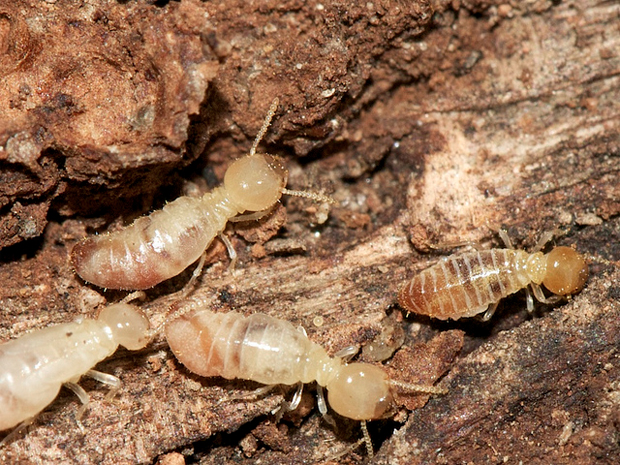
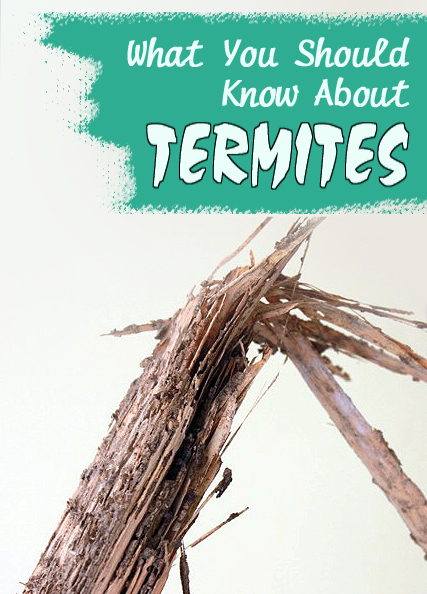
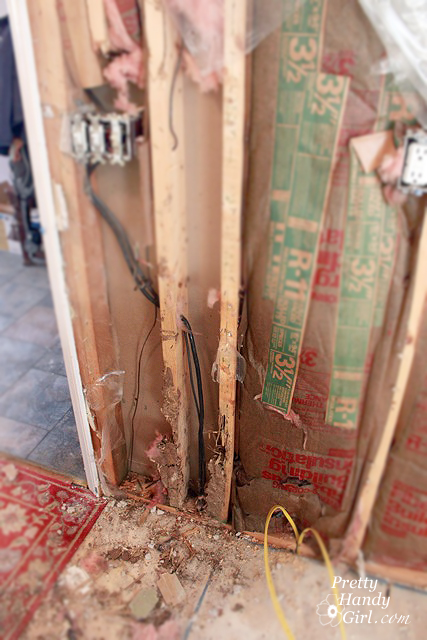
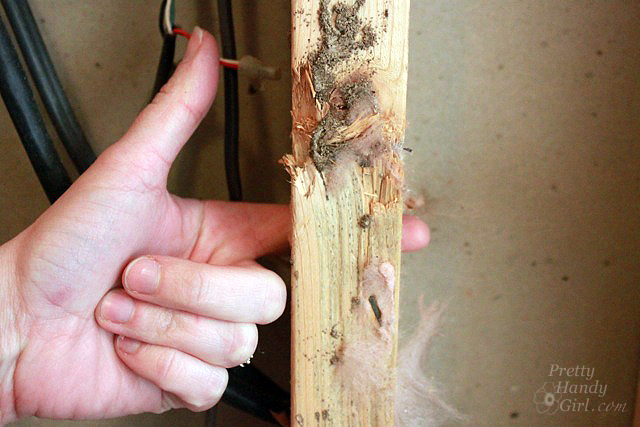
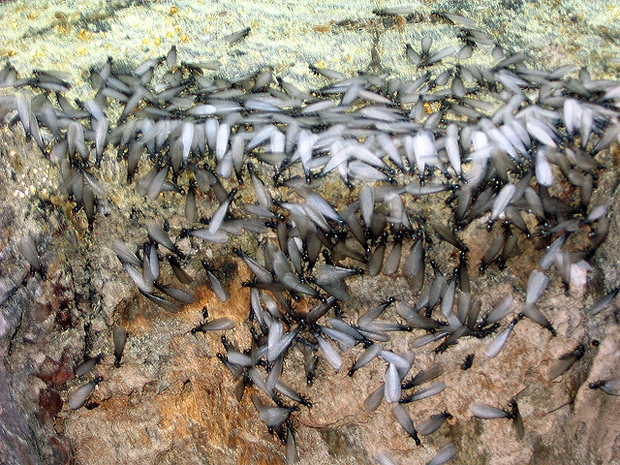
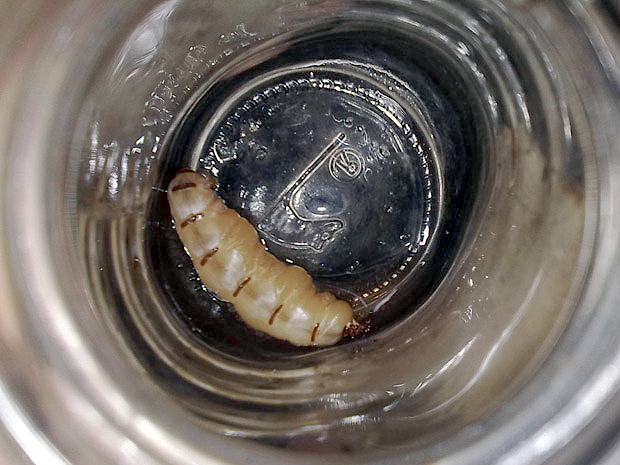
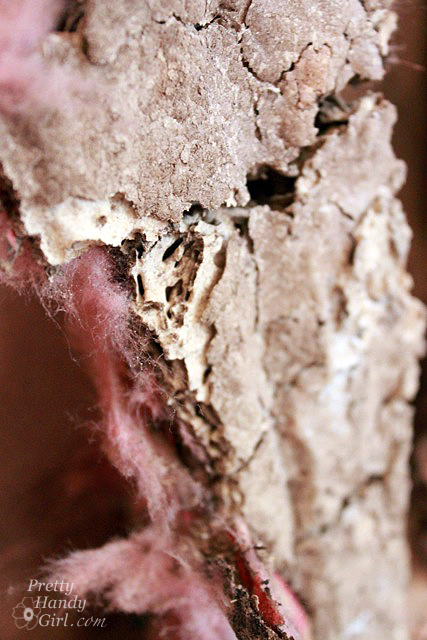
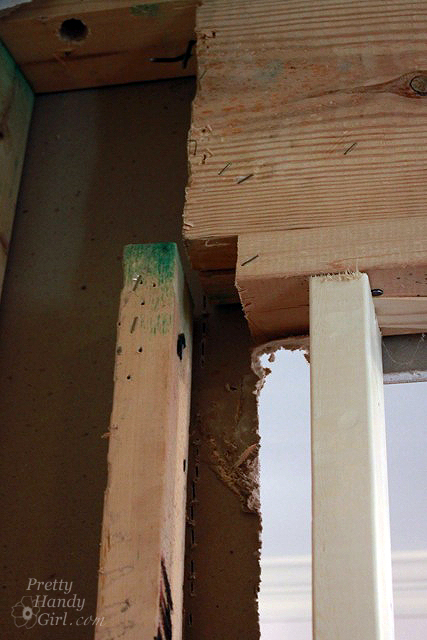
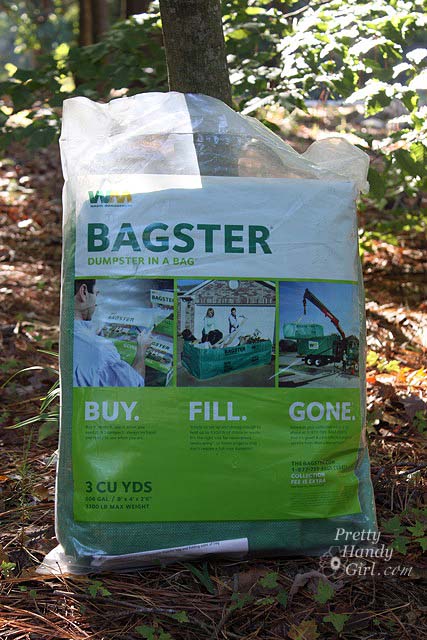
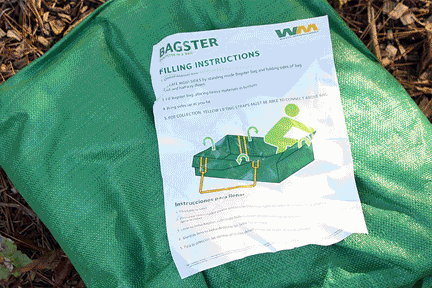
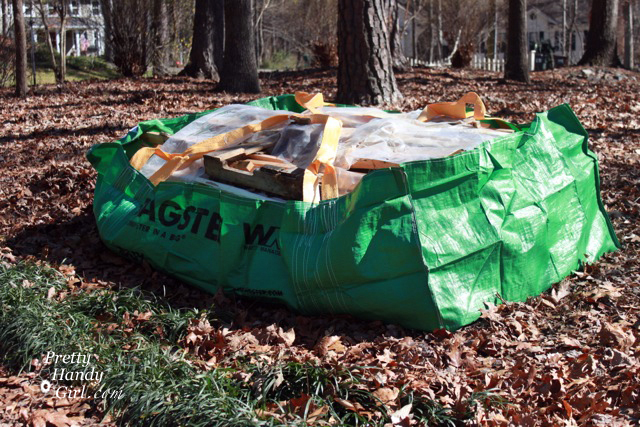



never had termites!
I have never had them and boy after seeing those pics I really hope not too!!
We found termites living in a section of our back fence. We did a full inspection of the fence and house after that. We treated the spot and have not had a problem since that time. That was 25 yrs ago. We still check for new signs but we have found no new problems.
Pretty Handy Girl, we had two types in our house. The first was dry wood termites. They are the type that come in with, uh oh, old furniture. Ours were brought in with a Hoozier I bought at an antique store and restrored. They can lay dorment for years and then swarm. I was heart broken and am VERY careful about buying old furniture now. The other was the typical and they were in the garage, thank God. Had the problem taken care of and now have a contract with a company to come once a year.
I’ve never had termites, But, I think I will call the exterminator in the spring, just to check for all sorts of critters.
What a nightmare! I’m glad I read through the comments and saw the comment about the companies that use thermal imaging. I need to find a new company that does it that way. We haven’t had termites, band I hope to keep it that way.
I’ve never had termites but my parents had a pretty bad infestation in their firewood pile once. We ended up burning the whole pile that day and got the ground around it treated so they wouldn’t travel to the house.
Fortunately we’ve never had termites!
I have never experienced termites and knew little about them until I read all you helpful info – thanks for sharing.
I haven’t had termites damage before.Thank you for the giveaway!
Fortunately, we’ve never had termites. Living in the South though I know it’s a huge problem.
Your style is really unique compared to other people I have
read stuff from. Thank you for posting when you
have the opportunity, Guess I will just book mark this page.
Oh my gosh thank goodness it wasn’t a live infestation. Ours wasn’t either, but they certainly did some damage. I was spring-cleaning and found a bunch of my artwork leaning against a wall in the closet had huge holes! They had chewed their way straight out of the wall! We had to replace the drywall on the closet side, and if I remember correctly only two studs. I bet Mom would’ve loved that bagger instead of having to take a trip to the dump.
Luckily we’ve never had termites before.
Termite inspector just found a leak under my house. So having a service serves double purpose.
We lived in Taiwan for two years and had a swarm come through little openings in our windows (on the 10th floor!) and it was disgusting! We did not stay in that apartment long enough to find out if any of them that may have survived our mad spraying did any damage.
Makes my skin crawl remembering it!